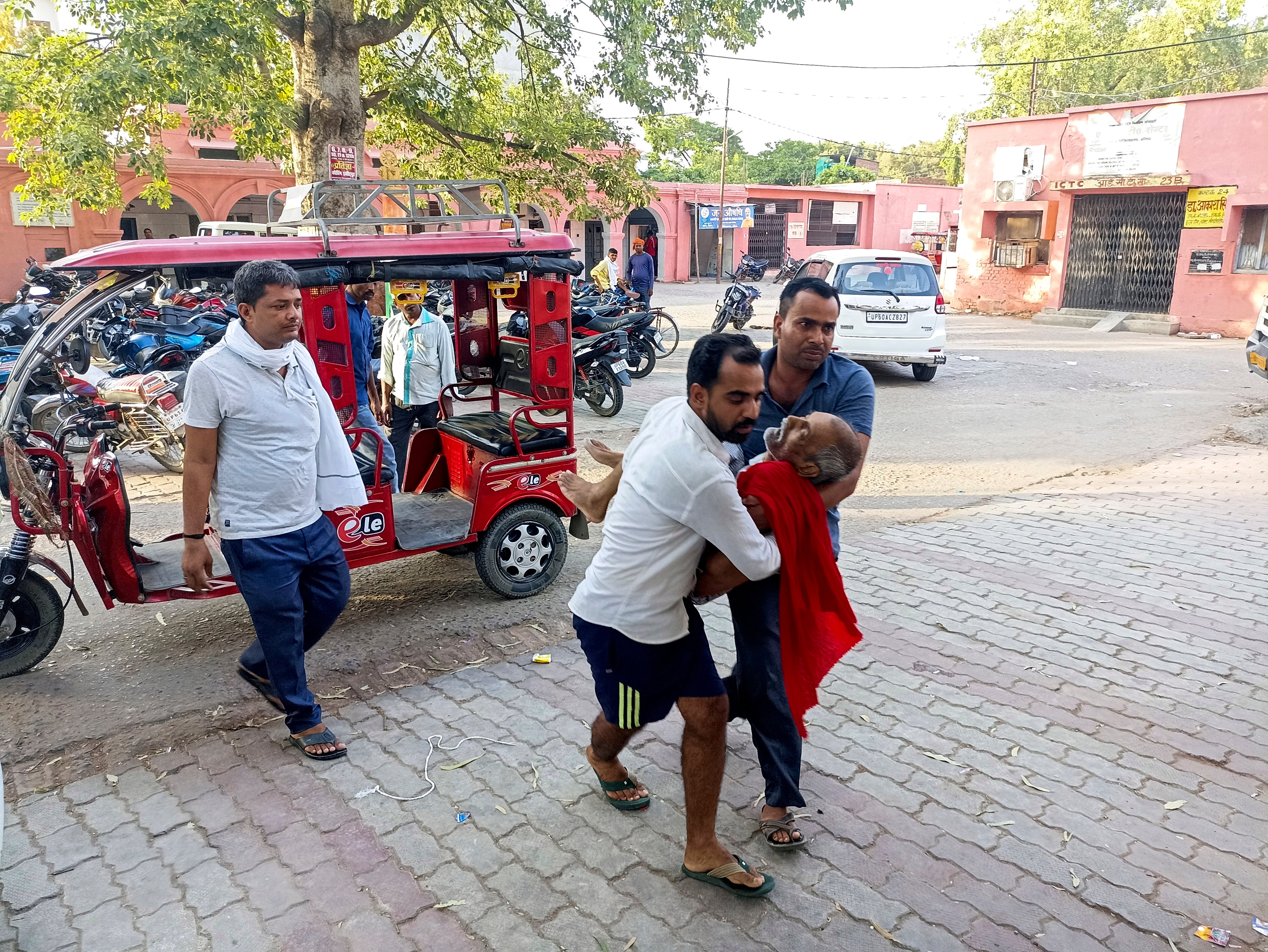Nearly 100 die as scorching heatwave with 45C temperatures sweeps northern India
According to India’s Meteorological Department, maximum temperatures have risen to 42C to 45C in at least five states

Your support helps us to tell the story
From reproductive rights to climate change to Big Tech, The Independent is on the ground when the story is developing. Whether it's investigating the financials of Elon Musk's pro-Trump PAC or producing our latest documentary, 'The A Word', which shines a light on the American women fighting for reproductive rights, we know how important it is to parse out the facts from the messaging.
At such a critical moment in US history, we need reporters on the ground. Your donation allows us to keep sending journalists to speak to both sides of the story.
The Independent is trusted by Americans across the entire political spectrum. And unlike many other quality news outlets, we choose not to lock Americans out of our reporting and analysis with paywalls. We believe quality journalism should be available to everyone, paid for by those who can afford it.
Your support makes all the difference.A scorching heatwave sweeping across northeast India has caused nearly 100 deaths in two states with hundreds hospitalised in the span of three days as officials appeared to deflect blame.
A total of 96 people died in the northern state of Uttar Pradesh and eastern Bihar as the Indian weather agency issued more severe advisories for heatwaves for some northeastern regions.
According to India’s Meteorological Department, maximum temperatures have risen to 42C to 45C in at least five states on Saturday. Authorities have urged people to stay indoors as daily minimum temperatures also soared.
The weather agency said there is “a very high likelihood of developing heat illness and heat stroke in all ages” and extended the heat advisories till Tuesday for northeastern regions.
In eastern Uttar Pradesh’s Ballia district, 54 people were dead in Ballia District Hospital from 15 June to 17 June and some 300 people were hospitalised.
The health officials in the state have issued conflicting reasons for the death as they appeared to delink the deaths with the heatwave and fired the chief medical superintendent of Ballia hospital for “causing panic”.
Dr Diwakar Singh who was removed said: “All the deceased were old and had some ailment. Because of the heat, those diseases aggravated and they were brought in serious condition to the hospital and died during treatment and tests. This was despite all arrangements for medicines and treatment.”
Dr SK Yadav, the new chief medical superintendent of the hospital, attributed the deaths to “various reasons” and said heatstroke could be a possibility.

“There are all kinds of patients here. Among those deceased, there were people with fever, blood pressure, and breathing issues. Then, there were patients above 65 years old. All kinds of patients were there. The temperature is touching 42 to 45 degree Celsius and people are suffering from heatstroke, and such patients are also there. We are all in alert mode,” he said.
Officials said people are exhibiting symptoms of high fever, vomiting, diarrhoea, breathing difficulties and heart-related issues with most of those admitted aged 60 and above.
Authorities had to cancel leave applications for medical personnel in Ballia and provide additional hospital beds as well as fans and air conditioning in the emergency and general wards to accommodate the influx of patients.

The state’s health minister, Brijesh Pathak, said they had opened an investigation into the cause of the deaths of "so many people" in Ballia.
He said two director-level senior doctors have been sent to the spot and they will present a report to the government.
“At all hospitals in the district, officials have been instructed to identify and treat each patient. All medicines are available, and I am monitoring the situation,” said the minister.
In Bihar, 42 deaths have been reported in the span of two days and over 200 patients were hospitalised after suffering from diarrhoea and vomiting.
Around 35 people died in two hospitals in the state capital Patna where the maximum temperature soared to 44.7C on Saturday.
Authorities in Patna restricted all academic activities from 12 to 24 June for students up to 12th standard due to the extreme heatwave.
In some respite to residents in Patna and Delhi NCR region, rains brought down the mercury on Monday.
The summer months of April, May and June are generally brutal in most of India where half of India’s workforce works outdoors in scorching heat while the country’s infrastructure is not built to provide shelters and relief in accordance with the rising temperatures.
The temperatures have become more intense in the past decade and people usually suffer severe water shortages, with tens of millions of its 1.4 billion people lacking running water.
According to research conducted by World Weather Attribution, a scholarly organisation dedicated to analyzing the origins of extreme heat, it has been determined that climate change increased the likelihood of a heatwave in April that affected certain regions of South Asia by at least 30 times.
In April, the heat caused the death of 13 people at a government event in India‘s financial capital of Mumbai. Additionally, several states chose to temporarily close all schools for a week in response to the extreme weather conditions.



Join our commenting forum
Join thought-provoking conversations, follow other Independent readers and see their replies
Comments